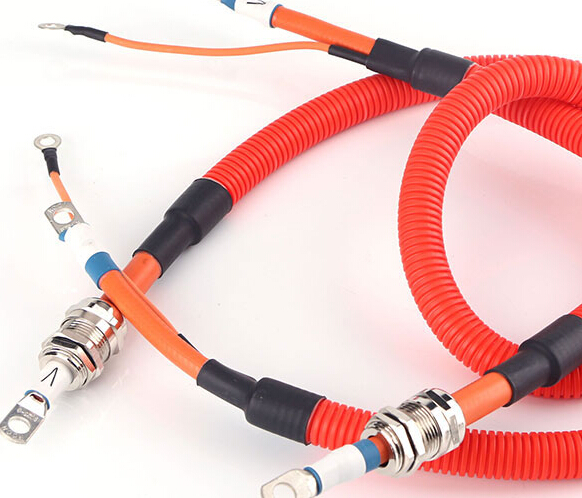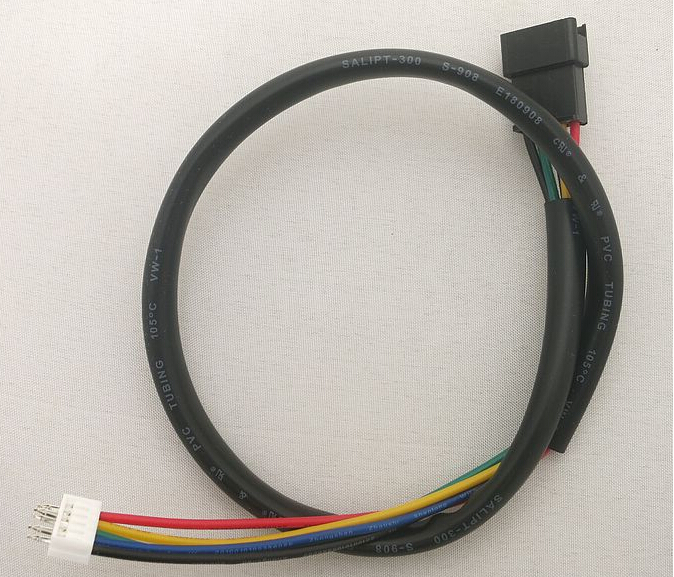Energy saving and environmental protection vehicle harness protection scheme
More environmentally friendly, lighter design
For today's automotive engineers, improving fuel economy and reducing greenhouse gas (GHG) emissions has become an important design guideline. It is clear that electric vehicles and hybrid cars are the solution to these challenges, but the technology to reduce the weight of the car can also provide some obvious benefits, because reducing vehicle weight and rolling resistance can reduce the demand for energy and effectively reduce carbon dioxide emissions The
In addition to improving component integration and the use of advanced materials to help car manufacturers reduce vehicle weight, wire harness weight is also a particularly interesting area and has attracted design engineers to re-examine their design to prevent automotive power Function is damaged due to high current fault condition.
One of the challenges for design engineers is to retain and / or increase circuit protection devices that help protect automotive electronics from possible overload conditions while reducing overall cost and weight. Since a car may usually contain hundreds of circuits and more than one kilometer of wire, the complexity of the cabling system may make the traditional circuit design technology difficult to use, and may lead to unnecessary over-design.
Many manufacturers have found that the use of distributed architectures and resettable polymer positive temperature coefficient (PPTC) overcurrent protection devices can significantly reduce vehicle weight. Figures 1 and 2 show the differences between traditional centralized architectures and distributed architectures. The centralized solution requires that each module be protected by a separate fuse in the junction box, see the yellow part of the figure. In this "star" architecture, each function also requires independent wires, thereby increasing the weight and cost. In contrast, in a distributed architecture where multiple junction boxes are powered by the power bus, each wire from the junction box can be protected by a resettable circuit protection device.
In the past, the mechanical strength specified in the car used the smallest wire diameter of 0.35 square millimeters (22 AWG), it can carry the current range from 8A to 10A. This limitation, to a certain extent, counteracts the benefits of using PPTC devices in low current signal circuits (such as below 8A). However, current wire material technology can support smaller diameter conductors under a given current carrying capacity, including wires with a diameter of 0.13 mm2 (26 AWB) and a maximum current of 5A. This advanced technology can reduce the weight when using distributed architecture and PPTC overcurrent protection.
Related articles
-

The face of new energy vehicles in the hot market wiring harness processing usher in new opportunities
China in just two years time beyond the United States, jumped to the world's largest new energy car market, in accordance with national planning, by 2020, new energy vehicles will reach 5 million.The
-

Automotive wiring harness common problems and the impact of what?
With the development of social life and the continuous improvement of living standards, people are not only pursuing material enjoyment but also pursuing spiritual enjoyment. They pay great attention
-

Design of automotive wiring harness
Design of automotive harnessFirst, the schematic design and calculation1. Draw electrical schematics according to the electrical configuration and technical requirements required by the Electrical Des
-

Basic technical requirements for electric vehicle wiring harness (1)
The growing problem of environmental pollution has made the government spare no effort in promoting the development of environmental protection industry, especially the promotion of electric vehicle i
-

Basic technical requirements for electric vehicle wiring harness (2)
At present, we know the various types of electric vehicles in the mileage of how many little let the consumer is not satisfied, so in addition to energy recovery and some other auxiliary technology, t
-

Design Principle of Vehicle Harness
(A) power distribution design Whether the design of the power supply system of the automobile is reasonable is directly related to the normal operation of the automobile electri
-

Intelligent life so that the electronic wiring harness market is more popular
With the country to vigorously promote the new energy vehicles, home appliances "TM" policy and people on the intelligent machine automation replacement speed, highlighting the huge demand for China's electronic wiring harness. In recent years, many joint ventures have emerged, wire harness processing to China to shift positions, China has become an important global harness processing and manufacturing center. From the popularity of household appliances to communications equipment, computers and external equipment, as well as security, solar, aircraft, automotive and military equipment are widely used electronic wiring harness. Industry forecast, especially in China 4G launched, home appliances, cars to the countryside and industrial information and other multi-party
-

What are the common causes of the wiring harness?
Wire harness as the machine"blood vessels", bear the role of energy and communication transmission, just like people will be sick, the harness will be used for a long time a variety of failures, the f
















 RCCN WeChat QrCode
RCCN WeChat QrCode Mobile WebSite
Mobile WebSite